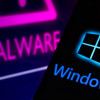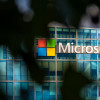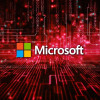A First Look at Windows Firewall
After plowing through more than 200 pages of documentation about the extensive changes in Windows XP Service Pack 2 (SP2), I wasn't optimistic about testing the XP SP2 beta. With the introduction of a real firewall; security controls for Distributed COM (DCOM), remote procedure call (RPC), and WWW Distributed Authoring and Versioning (WebDAV) operations; secure wireless networking; the ability to kill pop-ups; and hands-on management of Microsoft Internet Explorer (IE) plug-ins, SP2 has more in common with a new OS than a service pack with bug fixes. The upgrade also changes the open access paradigm to limited or no access, which in theory can wreak havoc with network connectivity and server-based operations.
The monstrous 264MB download expands to consume 323MB of disk space containing 2902 files in 102 directories. You can install the service pack via all the usual methods: Double-click the self-extracting download file, expand the download file on a local or network drive, and run i386updateupdate.exe; or deploy the upgrade via Group Policy and the Windows Installer package i386updateupdate.msi.
With more than a little trepidation, I skipped the compatibility check and started the upgrade. Much to my surprise, the release candidate (RC) installed without errors in under 40 minutes on a generic XP Professional Edition system. My test system wasn't running Microsoft Office or any client-type applications and wasn't connected to Microsoft Exchange Server or SQL Server. After the mandatory reboot, the system prompted me to enable Automatic Updates before presenting the logon screen. Not wanting to muddy the waters, I enabled Automatic Updates, logged on, and went straight for the firewall.









































































